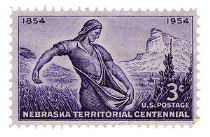Extension, Cooperative

Nebraska Agricultural Experiment Station: Historical Research Bulletins
Date of this Version
3-1974
Document Type
Article
Citation
McCarty, M.K., Cox, M.L. and Linscott, D.L. (1974) The effect of 2,4-D, grazing management and nitrogen fertilizer on pasture production (Research Bulletin No. 260)
Abstract
Many pastures in eastern Nebraska and surrounding areas have gradually decreased in productivity. Over a long period of heavy grazing, native warm-season grasses have been largely replaced with Kentucky bluegrass, other less desirable grasses, and broadleaf weeds. A program was started in 1949 to study the effectiveness of protection from grazing in changing the botanical composition and yield of a pasture where the predominant forage was Kentucky bluegrass. Several weed control treatments were included in this experiment to determine if mowing or spraying would hasten the return of more desirable forage. After weed control and differential grazing treatments had been applied annually for three years, definite trends were evident toward increased yields of desirable forage, together with marked reductions of broadleaf weeds. In 1953, Cox began a program of nitrogen fertilization on portions of the original experimental plots to determine whether or not nitrogen would further speed up the rate of improvement. This bulletin reports the effects of increased fertility as well as the cumulative effects of weed control and grazing management of the original experiment on the vegetative composition of the treated plots. Some effects on the soil environment are also noted.


Comments
ISSN 0161-3823